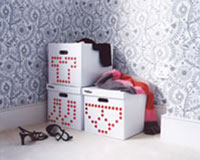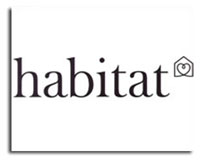
Top stories


In addition, support from big business such as Absa, SAA, Woolworths and Toyota ensures that what has become known as the “cerebral party of the year” stays firmly on the creative map.
In the quest to quantify the value of the creative contribution, Alistair King from multi-disciplinary local ad outfit King James broached the delicate subject of the relationship between business and creativity.
Preaching to the converted, he concluded that creativity is not a hobby, a nice-to-have or something for which you can buy the software, but a vital ingredient, which should be adequately rewarded for its immeasurable contribution to brands, to culture and to quality of life.
“With one pixel from Google, you can buy Camps Bay and Nigeria…” We had the charming duo of Daljit Singh and his counterpart Simon Waterfall out from London to thank for their research in this regard, reminding us also of the enterprising individual who earned a million pounds by selling off pixels for one pound apiece - without leaving his bedroom.
If creativity is indeed currency, then pixels are the small change. Which adds up to no insignificant amount, if you consider that we are currently generating 29.7 quadrillion pixels via email alone every day - an amount by which you could cover the Great Wall of China in pixels every eight hours.
If this seems irrelevant to your perception of either commerce or design, then consider this – the Google offices in San Francisco recently opened nine new buildings - in one day, its corporate culture includes having virtual swimming pools in its offices - with real lifeguards, a reception area which is open to the public viewing and plasma screen representations of the world, their world, in real time, with different colours representing the different languages being searched at any given time – and all because one Google pixel is nowadays worth more than a fist-sized diamond.
The value of the creative message was expanded upon by another UK great, Wally Olins, looking at the nature of creativity in national brand building and the various factors at play in how countries or regions are perceived via their local products. For example, everyone knows that whiskey is Scottish and olive oil is Italian, but how come products like Samsung and Hyundai are not immediately recognised as intrinsically Korean?
Possibly of some relevance to us, in our ongoing quest to find cohesive symbols of our own identity, was the Spanish case study, which has made a point of expressing pure passion as a national characteristic across much of its brands and branding over the past two decades, proving that identity might not only be about symbols, but also about the quest for meaning, emotion and truth.
According to Olins, at least 69 countries in the world, from Tibet to Morocco and including South Africa, refer to themselves in their tourism brochures as “A land of contrasts” - emphasising the real need to dig deep for authenticity in national communications.
If you were in any doubt as to the real value of the creative end product, Andy Stevens from London’s Graphic Thought Facility delivered the coup de grace, with work so masterful, sensitive, intelligent and cost effective, that it should have even the most conservative clients forking out for their services.
Responsible for the must-have, die-cut cardboard “ME” storage boxes, signage and communication graphics in an array of both high and low tech “found substrates” and the iconic Habitat house/heart logo - LGT, as the agency is known - has been dubbed “the hottest design studio in London”. See also its recreation of the human genomic structures related to diseases such as cancer, malaria and HIV, made visible as neon sculptures and doing wonders for the Wellcome Trust brand as window displays on London’s Euston Road.


That there is no substitute for passion, was concretely proven by expat Keith Helfet, whose remodeling of an old Triumph Spitfire, rescued from the trash, out of plaster of Paris ensured him a much sought-after place in the RCA car design faculty in the 1970s. Even with no prior art training, Helfet was accepted on the basis that never in the history of the Royal College had anyone presented a full-scale model of a car in their application, let alone in 3D!
On graduating, a distinguished 25-year career at Jaguar saw “home-boy” Helfet, responsible for the design of the breathtaking F-type, successor to the iconic E-type Jaguar [by Malcolm Sayer] and following in the hallowed footsteps of previous Jaguar style guides Geoff Lawson and Sir William Lyons
More recently responsible for the look of friendlier MRI bodyscanner units for nuclear medical company Elscint, he points out that, as with the XJ220 Jaguars, orders were placed based on styling alone, before the products had even been tested. This illustrates Helfet’s argument as the ultimate rationale for emotional content in product design.


